
Past, Present, And Future Of Afghan Landrace Cannabis
Afghan landrace cannabis is world-renowned. And now, thanks to the hard work of daring travellers and cannabis lovers, its easier than ever before to grow landrace Afghan weed at home. Find out all about the past, present, and future of Afghan landrace cannabis here.
Tucked away in Central Asia is Afghanistan—a country that, despite years of political instability, continues to fascinate cannabis lovers with its alluring culture and unique local landrace strains.
But why is Afghan cannabis so special? What geographic and social influences have converged to make this region such an amazing hub for cannabis genetics? Keep reading to learn all there is to know about Afghanistan’s landrace strains and unique cannabis culture.
What are landrace strains?
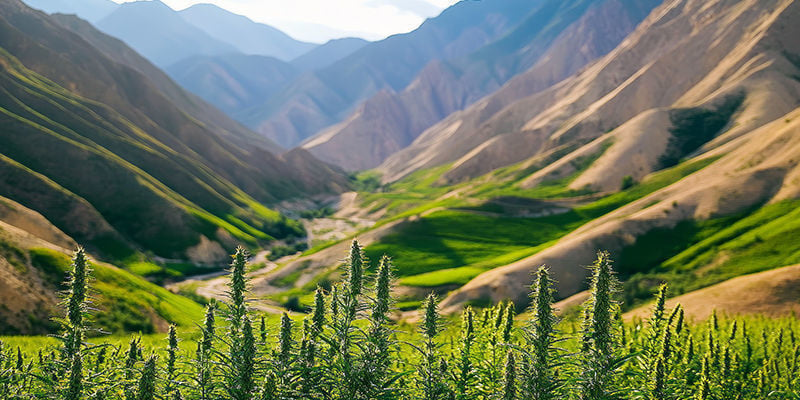
For those with a passion for weed, landrace strains are kind of like the crown jewel of cannabis. Grown in isolation in specific regions of the world (that is, away from other varieties of cannabis), these strains develop unique traits in response to their local growing conditions. From distinct flowering times and bud structures to novel aromas and flavours, landrace strains adopt unique properties from years of adapting to factors like the temperature, humidity, and soil composition of their habitat.
In the modern world of cannabis hybrids, landrace strains provide a snapshot into the history of cannabis across the world, as well as a nostalgic look at what the plant looks, smells, and tastes like when grown out in nature. Whether you grow your own cannabis, breed unique strains, collect seeds, or simply enjoy the plant's many different aromas and flavours, experimenting with landrace weed is truly special.
The history of Afghan landrace strains
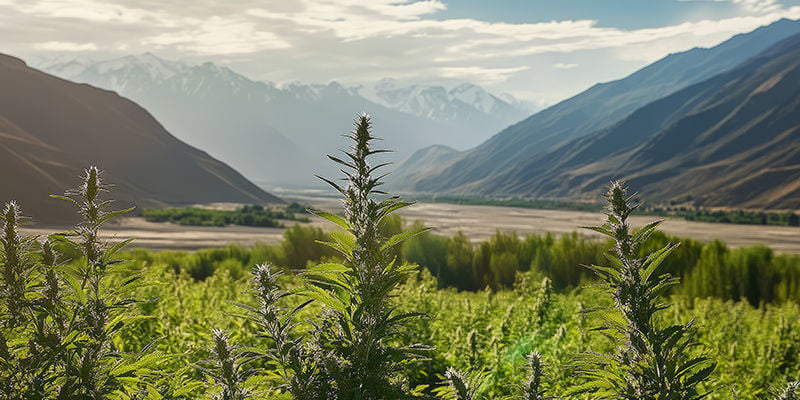
From the rugged coasts of South Africa to the mountains of Asia, landrace strains can be found all across the globe, particularly in regions where the plant's use has been deeply ingrained in local culture. Afghanistan is one such region, offering a melting pot of unique landrace cannabis genetics.
Cannabis is central to Afghan culture and likely has been for centuries. There are many theories about this—researchers like Russian botanist Nikolay Ivanovich Vavilov and others long held the opinion that cannabis, as well as its use as a psychoactive drug, originated in the areas comprising modern-day Afghanistan, Pakistan, Tajikistan, Uzbekistan, and parts of India and China (McPartland, Hegman, & Long, 2019; Vavilov & Dorofeev, 1992).
Others, however, suggest that cannabis is native to the Tibetan Plateau and was spread further west by nomadic tribes (Wnuk, 2023). There are also many theories and folktales about how cannabis got introduced into Afghanistan and, broadly speaking, Islamic societies in general.
For example, some argue that cannabis was brought further west by Genghis Khan’s armies, who themselves inherited the plant from the Scythians (Bjelica & Foschini, 2019). Meanwhile, some claim that cannabis was introduced to Afghanistan by Baba Ku—a semi-mythological figure whose shrine in Balkh continues to attract weed-loving visitors (Strazzeri, 2021).
Regardless of whether cannabis is native to Afghanistan, or how it got there, one thing is crystal clear—Afghans love to get high. Furthermore, the cannabis plant and its use as a psychoactive drug are both deeply established in local culture (Binsky, 2019; Strazzeri, 2024).
Even in large cities like Mazar-i-Sharif, it’s not uncommon for cannabis plants to be seen growing in people’s yards. Further outside of Afghanistan's cities, however, cannabis plantations become larger and ever-more conspicuous, despite the plant being illegal under Afghan law.
Unlike in other parts of the world, cannabis in Afghanistan is most commonly consumed in the form of hashish (known as “chars” in Dari or Pashto). It is smoked in chillums and pipes, is particularly popular among older men, and is derived from, you guessed it, locally grown landrace cannabis.
Traits of Afghan landrace cannabis
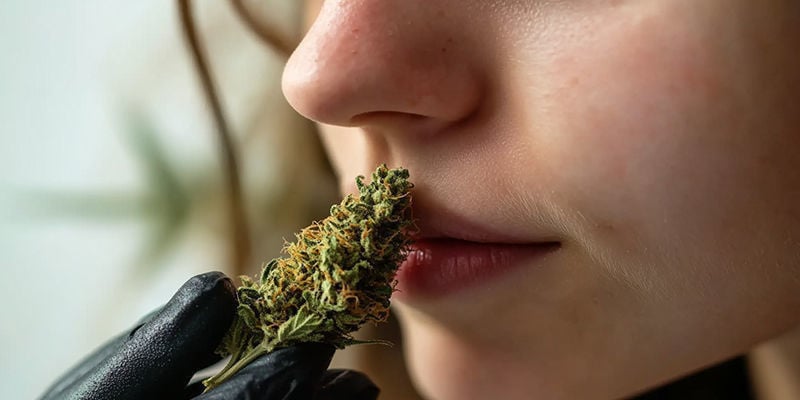
Broadly speaking, Afghan cannabis and hashish are renowned for their strong aromas and flavours, which are dominated by musky, earthy, woody, and spicy notes (rather than being sweet, fruity, or “gassy” like modern strains). However, different strains from across the country have unique traits.
Cannabis plants from central Afghanistan (e.g. provinces such as Bamiyan) have adapted to the area's hot, clear summers and freezing winters, resulting in extra-hardy plants that produce flowers with subtle berry-like overtones.
Meanwhile, plants from more southern regions (like Kandahar) have adapted to the area's almost desert-like climate, and produce flowers with earthier aromas and flavours reminiscent of coffee, wood, and moist soil. Some strains from this region also have subtle fruity overtones reminiscent of green apples.
Besides their unique aromas and flavours, Afghan landrace strains stand out from other varieties in their morphology too. Cultivated Afghan cannabis plants tend to have broad leaves and strong stems, growing into large, deep-green bushes that can stand over 200 cm tall and produce very large flowers and seeds.
Wild or feral plants, on the other hand, are skinnier and shorter, producing smaller, wispy flowers with less resin and smaller seeds. Rather than buying seeds from seed banks or international breeders, Afghan cannabis farmers sow their own seeds, which they harvest from pollinated females on their farms. In doing so, they have helped to preserve and refine the traits that now characterise Afghan landrace strains and make them so sought after.
Challenges and rewards of collecting Afghan landrace strains
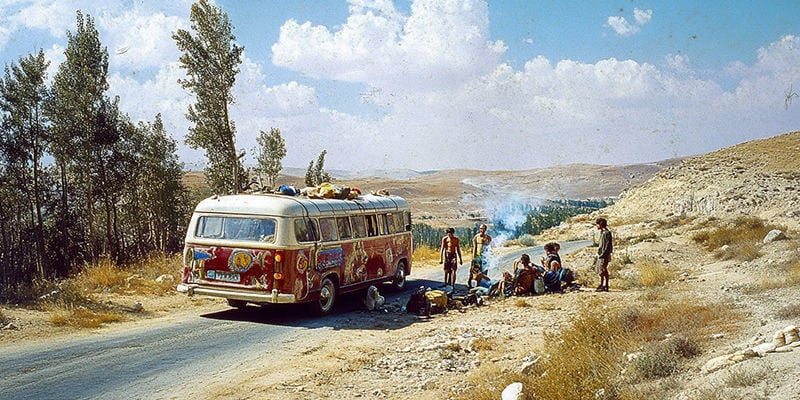
Afghans aren't the only people who treasure their local weed—smokers from across the globe do too! Indeed, for a brief period in the 1970s tourists flocked to "The Hippie Trail" in search of new experiences and, of course, top-shelf drugs. Unfortunately, the Cold War and other disturbances (such as the Iranian Revolution) halted tourism to the area and left Afghanistan (as well as other nearby regions) cut off from the rest of the world for almost 30 years.
Though tourism in Afghanistan is slowly on the rise (the nation received around 5,000 international visitors in 2023), the region remains isolated (Al Jazeera, 2024). The fact that cannabis is still technically illegal in the country doesn't make things easier for foreigners looking to explore Afghanistan's ties with this ancient plant, as those involved in growing it or the production/sale of hashish prefer to keep a low profile.
The lack of infrastructure and hospitality options also continue to complicate travelling through the country in general. As if that weren't enough, the threat of violence from clashes between the Taliban, Isis, and the many ethnic groups that call Afghanistan "home" only adds to the equation.
Those who make the effort to travel through Afghanistan, connect with the locals, and immerse themselves in the country’s rich cannabis culture, however, find the experience extremely rewarding. In fact, the cannabis community has daring travellers to thank for the discovery of famous Afghan strains such as:
- Mazar-i-Sharif: Named after the capital of Afghanistan's Balkh province.
- Hindu Kush: Believed to originate from the footsteps of the Hindu Kush mountains that stretch through Afghanistan, Tajikistan, and Pakistan.
- Afghan Kush: Possibly a variety of Hindu Kush originating from similar mountainous regions.
The future of Afghan landrace strains
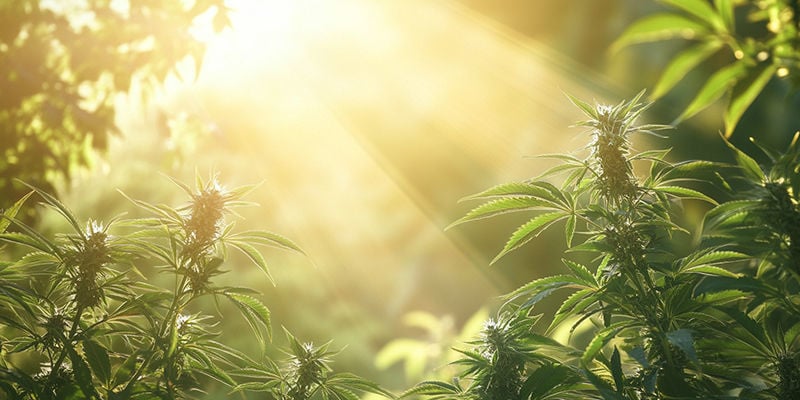
Those lucky enough to try Afghan hash or landrace weed will attest to its distinct flavours, aromas, and potency. Being so desired, it begs the question of when, if ever, Afghan cannabis will make its big break into the global cannabis market.
Historically, Afghan strains that managed to make it across the border were usually brought over by foreigners who travelled the country prior to the Soviet invasion and the Cold War. As tourism to the country resumes, could this be the chance for strain hunters and seed collectors to continue exploring what Afghanistan has to offer?
Or better yet, could the country be facing a new period of peace that allows Afghans to introduce their unique strains to the global market? After all, there is a huge demand for landrace weed, which will help preserve the cannabis genus' natural genomic diversity (Richmond & Clarke, 2020).
Unfortunately, it’s hard to say for sure what the future holds for Afghanistan’s landrace strains. What we do know, however, is that Zamnesia is proud to be among the first global seed shops to be working with Afghan Seed Connection—a company dedicated to bringing real landrace cannabis genetics to growers, breeders, and collectors all over the globe.
The unique journey of Afghan Seed Connection
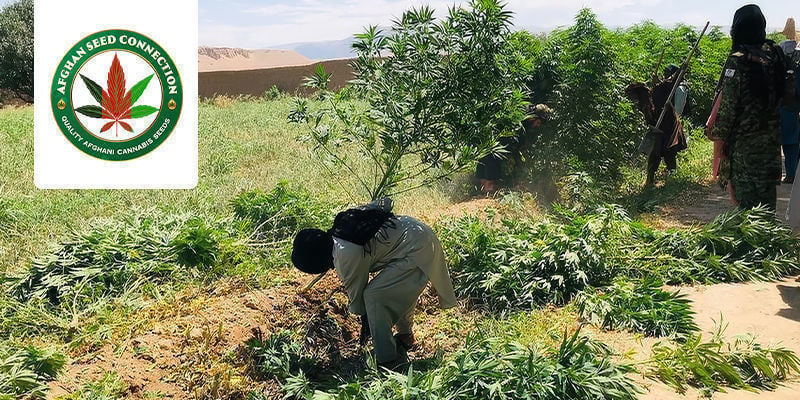
Afghan Seed Connection comprises a team of cannabis-loving individuals aiming to bridge the gap between the global cannabis market and Afghanistan's legacy farmers. In 2018, they began travelling to Afghanistan with the dream of obtaining permits to cultivate cannabis for medicinal purposes. Unfortunately, those plans came to an abrupt halt in 2020 when the Taliban took control of the country.
Rather than give up, Afghan Seed Connection returned to Afghanistan in 2021 to hold talks with the Taliban who, unfortunately, do not recognise cannabis as a medicinal plant and have continued to prohibit its growth and trade. Nonetheless, Afghan Seed Connection decided to travel through the country to explore its cannabis culture and catalogue the unique strains from its different regions.
Quickly, they learned of how central cannabis is to Afghanistan's people, especially in rural areas. "In some provinces, like Paktia and others, people live exclusively from the income provided by this plant”, says the company’s founder. “It is an important part of the Afghan market economy. Small farmers benefit from it and are only able to survive thanks to cannabis”.
Despite the Taliban's disapproval, Afghan Seed Connection decided to travel through Afghanistan by car to connect with local farmers and begin the enormous project of cataloguing the country's unique cultivars.
"We travelled through 16 provinces by car and analysed different seeds and different plants from each province", says Afghan Seed Connection. "We analysed the flowers and oil with a GemmCertPro, and the results were outstanding—especially in terms of CBD values, which were extremely high and varied. We decided to take the best varieties with us to Europe, set up the Afghan Seed Connection brand and made a promise to the farmers we met on our journeys, who are poor and rely on cannabis for an income. Apart from buying seeds from them, part of our income will also go to the farmers that supply us".
Top 5 strains from Afghan Seed Connection
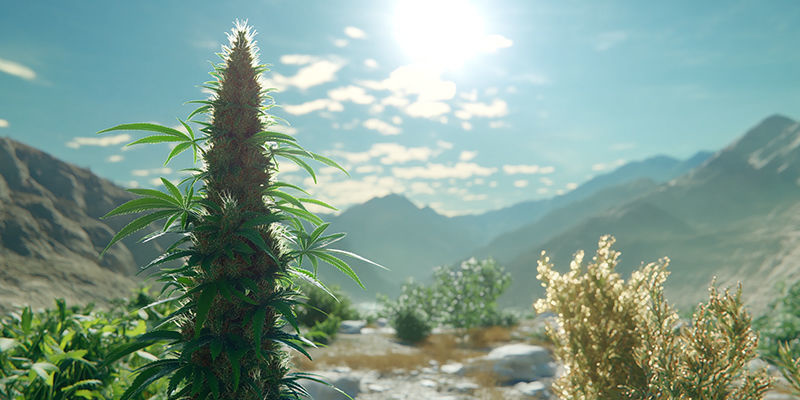
If you've been dreaming of cultivating landrace Afghan cannabis at home, now’s your chance! Check out these amazing strains by Afghan Seed Connection.
Afghan Seed Connection - Kabul
Kabul is Afghanistan's vibrant, bustling capital. Located in the country's east, it lies in a fertile valley with a rich history. Cannabis plants can be found even in Kabul's city centre, but it's the larger farms on the outskirts of the city where the magic really happens. And that's exactly where Afghan Seed Connection went to source these seeds.
Kabul regular seeds have adapted to the area's semi-arid continental climate and produce hardy specimens that make a worthy addition to any garden or breeding programme. Kabul plants can grow up to 180 cm and produce large, dense flowers boasting a mouthwatering, musky aroma with light lemon overtones and relaxing effects.
Afghan Seed Connection - Panjshir Real Kush
Native to the Panjshir province, Panjshir Real Kush is, you guessed, true Kush cannabis. Sourced from the foothills of the Hindu Kush mountains, these plants have spent years adapting to the region's subarctic/subalpine climate and now produce incredibly rich, potent cannabis.
If you live in a cool region, this is the strain for you. Just weeks after popping these seeds, your garden will be home to lush plants that produce excellent males for breeding and stunning females. Panjshir Real Kush plants grow up to 250 cm tall and produce dense, frosty buds with uniquely sweet, fruity aromas and up to 24% THC!
Afghan Seed Connection - Kandahar
Kandahar is arguably one of Afghanistan's biggest cannabis-producing regions—and for a country that produces over 3,000 tonnes of hash a year, that's really saying something (United Nations, 2009). With a hot, arid climate and an elevation of around 1,000 m above the sea, Kandahar produces truly mighty plants.
Kandahari males are tall, resinous, and develop strong branches, making for excellent breeding stock. Females, on the other hand, produce large, deep green flowers with excellent trichome coverage and aromatic notes reminiscent of coffee, wood, earth, and apples. Plus, with 26% THC, Kandahar cannabis produces a pseudo-psychedelic high that's both cerebral and physical—ideal for experienced users looking for a real kick!
Afghan Seed Connection - Parwan
Parwan is a little-known locality north of Kabul, but that didn't deter Afghan Seed Connection, who scoured the area for its most prized cannabis varieties. Expect to grow large plants that clock in at over 250 cm and need little more than water and good soil to flourish.
Due to their massive size and excellent branching, Parwan plants deliver extra-heavy harvests. The flowers produced by these plants are just as impressive, developing beautiful colours and aromas that perfectly characterise traditional Afghan hash with its bold, earthy, woody, and spicy notes.
Afghan Seed Connection - Helmand
Helmand is Afghanistan's largest province. Bordering Pakistan, it has a naturally dry and hot climate, with cool evenings and winters. Of course, the province is rife with cannabis plants, which Afghan Seed Connection sifted through to find some true keepers.
Pop these beans and, within weeks, your garden will be home to hardy, vigorous male and female plants that develop deep green leaves, a strong central stem, and large, brawny side branches. Thanks to their internodal spacing and resilience, these plants lend themselves extremely well to training. They also produce heavy harvests of dense flowers with deep Kush aromas, fruity highlights, and mossy undertones.
Cultivating Afghan landrace strains
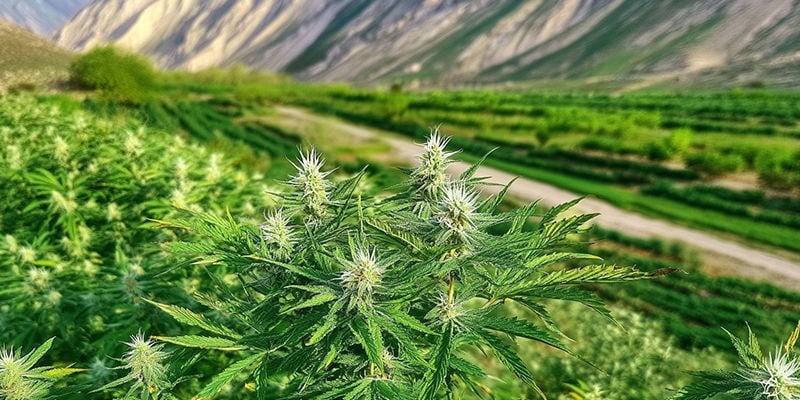
Afghanistan has a harsh, dry climate that encompasses continental, semi-arctic, and semi-desert-like conditions. Summers here are excruciatingly long and hot, while the winters are short and freezing. In many parts of the country, cannabis is the only viable crop for farmers, thanks to the plant's incredible ability to adapt to local conditions.
Afghanistan's climate has, over thousands of years, produced cannabis plants that are extremely hardy and resilient. They can handle both extreme heat and cold nighttime temperatures, as well as prolonged droughts. If you're an outdoor grower, you'll see these plants thrive even in cool climate zones.
Afghan landraces tend to grow very tall, easily reaching heights of up to 250 cm or more, which can make them challenging to grow indoors or in constrained greenhouses. However, their resilience to stress means that Afghan strains can handle most low and high-stress training techniques with ease. Their monstrous size and excellent branching give Afghan plants the ability to produce very large yields in almost any environment.
When growing any of the above Afghan landraces at home, we recommend doing so in large pots or garden plots. These plants love organic soil, though they should also adapt well to soilless setups. Their flowering times may vary depending on the region they are from, so be sure to keep this in mind and plan your grow accordingly.
Start your own Afghan adventure now
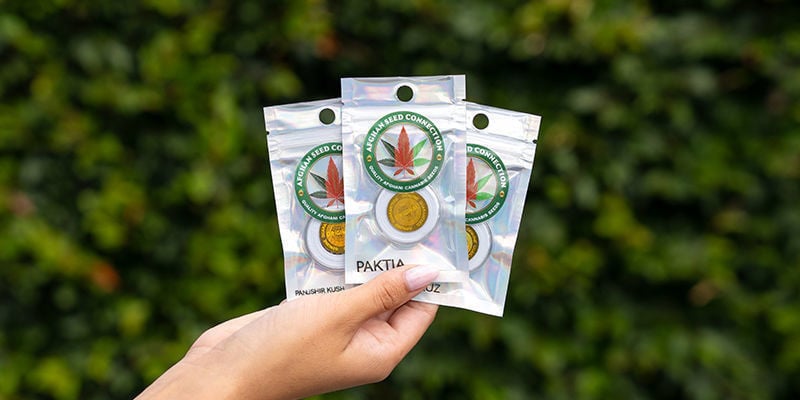
Ready to embark on the growing adventure of a lifetime? At Zamnesia, we're extremely proud to stock a full selection of landrace Afghan seeds from Afghan Seed Connection. Browse them today, pick your favourites, and enjoy the experience of growing Afghan landrace genetics while knowing that you're helping to sustain an age-old craft of cultivation that millions of Afghans rely on.
Seedshop
Click here to browse countless varieties of regular, feminized, and autoflowering cannabis seeds from the best banks in the world.
- Al Jazeera. (2 april 2024). Photos: Tourist numbers up in post-war Afghanistan - https://www.aljazeera.com
- Binsky, & D. (11 april 2019). How Afghanistan Gets High (Growing Their Own Hash) - https://www.youtube.com
- Bjelica, J., & Foschini, F. (7 januari 2019). The Myth of ‘Afghan Black’ (1): A cultural history of cannabis cultivation and hashish production in Afghanistan - https://www.afghanistan-analysts.org
- McPartland, John M., Hegman, William, Long, & Tengwen. (2019, November). Cannabis in Asia: its center of origin and early cultivation, based on a synthesis of subfossil pollen and archaeobotanical studies - https://link.springer.com
- McPartland, John M., Hegman, William, Long, & Tengwen. (2019, November). Cannabis in Asia: its center of origin and early cultivation, based on a synthesis of subfossil pollen and archaeobotanical studies - https://link.springer.com
- Richmond, M., & Clarke, R. C. (24 februari 2020). Cannabis landraces: Past, present, and future. Cannabis Business Times - https://www.cannabisbusinesstimes.com
- Strazzeri, & L. (6 oktober 2021). A Glimpse Into Afghanistan's Traditional Cannabis Culture - https://cannabisnow.com
- Strazzeri, & L. (12 augustus 2024). I Went On a Weed Tour of Afghanistan - https://www.vice.com
- Strazzeri, & L. (2024, August 12). I Went On a Weed Tour of Afghanistan - https://www.vice.com
- United Nations Office on Drugs and Crime. (2009). Afghanistan cannabis survey 2009 - https://www.unodc.org
- Vavilov, N. I., & Dorofeev, V. F. (1992). Origin and geography of cultivated plants - https://www.researchgate.net
- Wnuk, & A. (8 september 2023). How humans brought cannabis to every corner of the globe - https://www.newscientist.com
-
 5 min
21 June 2022
Top 10 Kush Cannabis Strains
Kush cannabis, hailing from the Afghan mountains, is one of the world's most popular strains. When crossed with other popular breeds, the hybrids this strain produces are globally renowned for...
5 min
21 June 2022
Top 10 Kush Cannabis Strains
Kush cannabis, hailing from the Afghan mountains, is one of the world's most popular strains. When crossed with other popular breeds, the hybrids this strain produces are globally renowned for...
-
 3 min
9 June 2022
Top 10 Best Feminized Cannabis Strains
We looove to grow Cannabis Seeds. Luckily for us we have a huge variety at our disposal. We understand that finding a good strain can be difficult, so we’ve made a top 10 of our most favourite...
3 min
9 June 2022
Top 10 Best Feminized Cannabis Strains
We looove to grow Cannabis Seeds. Luckily for us we have a huge variety at our disposal. We understand that finding a good strain can be difficult, so we’ve made a top 10 of our most favourite...
-
 7 min
20 August 2021
Top 10 Best Regular Cannabis Seeds Of 2025
If you want to take a deep dive into the world of cannabis genetics, it might be time to give some regular cannabis seeds a try. To help you take this major leap into cannabis breeding or cloning,...
7 min
20 August 2021
Top 10 Best Regular Cannabis Seeds Of 2025
If you want to take a deep dive into the world of cannabis genetics, it might be time to give some regular cannabis seeds a try. To help you take this major leap into cannabis breeding or cloning,...
-
 4 min
5 February 2021
Top 10 Most Exclusive Cannabis Strains
Instead of going for "the usual", try something new by exploring cannabis strains that are more out of the ordinary. With a plethora of options, it can be difficult to make a choice. Whether you...
4 min
5 February 2021
Top 10 Most Exclusive Cannabis Strains
Instead of going for "the usual", try something new by exploring cannabis strains that are more out of the ordinary. With a plethora of options, it can be difficult to make a choice. Whether you...









 United States
United States














